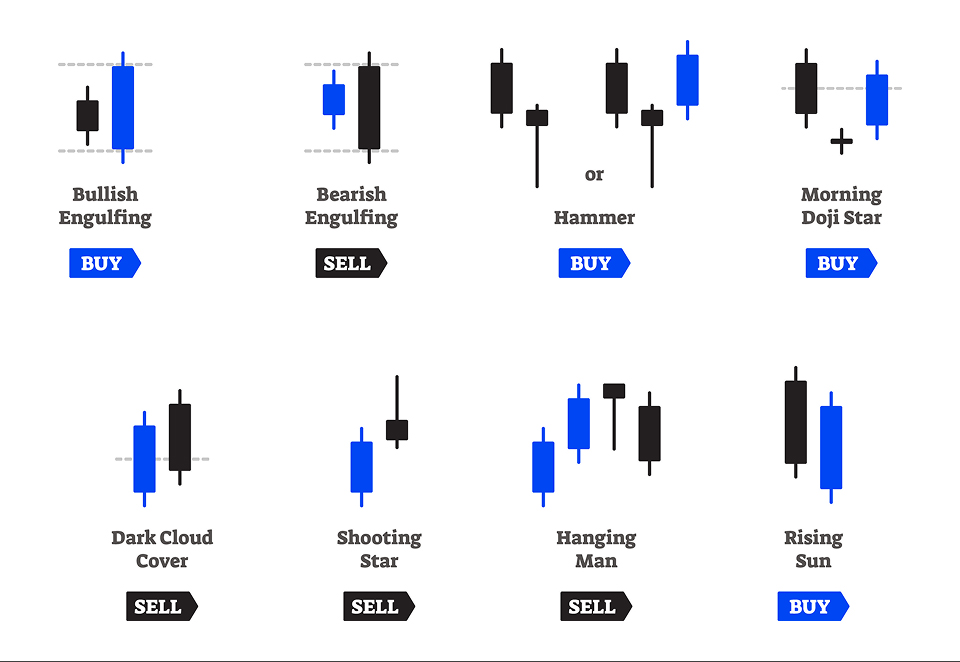Imagine knowing when the market is most likely to move in one's favor, not just by luck but by pattern. By understanding seasonal cycles, traders could predict price movements more accurately, making strategic decisions that can improve gains.
Whether it's the post-holiday surge or summer slowdowns, being aware of seasonal trends offers traders a competitive edge. Let's understand this in depth.
What are seasonal patterns?
Seasonal trading patterns refer to recurring trends in the market during specific times of the year. Factors like weather, holidays, and earnings cycles often drive these patterns. For example, retail stocks may perform better during the holiday season. Traders use these trends to predict price movements. They aim to capitalize on these predictable cycles.
Types of seasonal patterns

Monthly patterns
Monthly patterns are recurring trends that occur in specific months due to various factors. For example, stocks may perform well in January due to the 'January effect,' where investors purchase back stocks that were sold off at the end of the previous year.
Similarly, September often shows weaker performance due to investors' post-summer caution. Traders use these monthly patterns to time their investments. Recognizing these patterns allows traders to anticipate market shifts based on historical performance.
Quarterly patterns
Quarterly patterns are correlated with the market’s behavior in particular quarters of the year.
For example, during the first quarter or the January effect, performance is always positive since the new year inspired optimism and heavy earnings reports.
On the other hand, the third quarter could be weaker. That may be the result of summer slowdowns and reduced market activity. During these periods, traders pay close attention to earnings reports, corporate announcements, and the overall mood of the market. By noting the quarterly trends, investors can better understand the cycles that occur in the markets and adjust strategies accordingly.
Annual patterns
Annual patterns refer to consistent trends that repeat year after year. One common example is the 'Santa Claus rally,' where stocks tend to rise in the final days of December. Long-term factors like economic cycles, corporate earnings, and investor sentiment influence annual patterns.
For example, technology and consumer discretionary sectors often perform well early in the year due to increased consumer spending following the holiday season. Traders rely on these predictable patterns to plan long-term investments and capitalize on annual trends. They often use past years' performance to guide future decisions.
Weather-driven seasonal patterns
Weather-driven patterns carry implications for industries such as agriculture, energy and retail. The need for energy, for instance, typically increases in extreme weather, such as cold winters or hot summers. This means higher prices for oil and natural gas.
Countries that depend on agriculture may also be affected by seasonal weather events such as droughts or floods. Weather forecasts and historical data are used by traders to predict how events will affect stock prices and currencies. It helps them determine which sectors to invest in during certain seasons.
Holiday-driven patterns
Holiday-driven patterns occur when consumer spending spikes around major holidays, like Christmas, Thanksgiving, or Black Friday. Retail stocks tend to perform well during these times because they are driven by increased sales and consumer activity.
For example, the period leading up to Christmas typically sees a boost in retail and e-commerce stocks. Traders monitor these holiday-related shifts to align their trades with heightened market activity. By understanding holiday-driven behavior, traders can anticipate surges in certain sectors. This helps them optimize their investment strategies for seasonal growth.
Day-of-week patterns
Day-of-week patterns refer to the tendency for stock prices or currency pairs to behave differently depending on the day of the week. For example, Mondays often experience lower asset prices due to the 'Monday effect,' a result of weekend news or investor caution.
Conversely, assets tend to rise on Fridays as investors look to close out the week on a positive note. Traders who track these patterns use them to adjust their trading strategies. Recognizing day-of-week behavior helps investors maximize gains by predicting short-term market movements based on weekly cycles.
Seasonal cycles in emerging markets
Emerging markets often exhibit unique seasonal cycles influenced by factors such as political events, global commodity prices, and economic conditions. For instance, in countries like Brazil, agricultural exports drive seasonal patterns, with increased demand for products like soybeans or coffee during harvest seasons. This also appreciates the related currency.
Additionally, holiday seasons in these markets may drive higher consumer spending. Traders who understand these local cycles can capitalize on seasonal shifts by investing in the right emerging-market sectors at the right times.
Tax-loss selling
Tax-loss selling happens toward the end of the year when investors exit from losing assets to offset gains. This reduces their taxable income.
The pattern typically occurs in December. Once the exit pressure subsides, the market rebounds in January. Traders anticipate this trend, purchasing assets that have been heavily sold off in December to capitalize on the potential recovery in early January.
Earnings season
Earnings season is the period when companies report their quarterly financial results. These reports, typically released in January, April, July, and October, can lead to sharp price movements based on whether a company meets, exceeds, or falls short of market expectations.
Traders often watch earnings reports closely. Based on the results, they look for stocks with potential upside or downside. Understanding earnings season helps investors time their trades. They enter stocks that show strong earnings growth and avoid those that underperform.
Holiday rally
The holiday rally refers to the tendency for asset prices to rise during the final weeks of the year, especially between Christmas and New Year's. Optimism, year-end bonuses, and increased consumer spending drive this rally. Investors are also more likely to purchase assets in anticipation of strong performance in the following year.
This pattern is particularly evident in US markets. Traders often use this period to lock gains before the year-end. They gain from the seasonal optimism that boosts market sentiment.
Economic cycles
Economic cycles are the natural rise and fall of economic activity over time, which affect markets and investor sentiment. While new businesses are formed and consumer demand raises, assets experience well during periods of economic expansion.
Understanding the economic cycle phases (expansion, peak, contraction, trough) can help traders interpret those trends and adjust strategies accordingly. During expansion periods, they get into the financial markets; during contractions, they withdraw in accordance with the general climate.
Pre-holiday season
The pre-holiday season is the period just before major holidays like Christmas or Thanksgiving. It sees increased consumer spending, particularly in retail and e-commerce sectors. Investors often anticipate higher sales figures and increased gains for companies during this time.
Retail stocks, especially those in e-commerce, tend to rise as consumers start their holiday shopping early. Traders closely monitor this period to adjust their investments. They capitalize on strong consumer activity and prepare for post-holiday sales trends.
Advantages and disadvantages of trading seasonal patterns

Advantages
-
Predictable market movements: Seasonal patterns provide a level of predictability. This allows traders to anticipate price movements based on historical trends. Consistency helps in making informed decisions and planning trades accordingly
-
Capitalizing on historical data: Traders can use past performance data to forecast future market behavior. By identifying recurring trends, they can increase their chances of gaining trades during seasonal upswings
-
Reduced risk in familiar markets: Traders familiar with seasonal patterns in specific markets reduce uncertainty. They know when to expect volatility and can position themselves accordingly. This lowers their overall risk
-
Opportunity for long-term gains: Seasonal patterns can help traders identify long-term growth trends. By understanding recurring cycles, they can invest in sectors with predictable performance
Disadvantages
-
Limited flexibility: Seasonal patterns may lead traders to rely on fixed strategies. This reduces flexibility and adaptability. It becomes harder for traders to react to unexpected market changes or events outside the typical cycle
-
Over-reliance on historical data: Focusing too much on past data can be risky. Markets evolve, and patterns may not repeat as expected. This leads to missed opportunities or losses when relying solely on historical trends
-
Risk of seasonal variability: While patterns can be consistent, seasonal variability can still occur. Unpredictable events, like changes in weather or global crises, can disrupt expected market trends
-
False signals: Not all seasonal movements are accurate. Some years may deviate from the norm. False signals can also mislead traders into making poor investment decisions based on patterns that don't materialize
Analyzing the effects of seasonal cycles on different asset classes
Seasonal stock market trends
Stock markets experience predictable cycles throughout the year, influenced by factors such as earnings reports, economic data, and investor sentiment.
For instance, the market often performs well in the first quarter. This is driven by post-holiday optimism and strong earnings reports. In contrast, the third quarter can be weaker. This may be due to summer holidays and investor caution reducing activity. The Santa Claus rally in
December also boosts stock prices
The effect of harvest cycles and weather conditions on commodity markets
Seasonal cycles heavily influence commodity markets, especially in agriculture and energy.
For example, harvest cycles dictate the availability of crops like corn, wheat, and soybeans, impacting supply and prices. Weather conditions such as droughts or floods can significantly affect production, causing price fluctuations. Energy commodities like oil and natural gas are also impacted by seasonal demand, such as increased heating needs during winter or cooling needs in summer.
Spring and fall bond market cycles
The bond market follows seasonal patterns that align with economic cycles. In spring, bond prices typically rise as investors seek less risky investments after winter volatility. In fall, on the other hand, activity increases as companies issue bonds to finance operations before year-end.
Interest rate changes also play a role, with lower rates improving bond prices and higher rates leading to declines.
Holiday seasons and the global currency volatility
Holiday seasons can cause fluctuations in global currency markets due to consumer spending, international trade, and investor behavior changes.
For example, currency trading often slows in the weeks leading up to Christmas, as many traders and investors take holidays. However, currency pairs linked to consumer-driven economies, like the USD and EUR, can experience volatility during major retail periods due to shifts in demand.
Top tips to trade seasonal patterns
Analyze historical seasonal trends
Studying past seasonal data helps identify recurring trends. Focus on patterns that consistently appear during certain months or quarters. This allows traders to anticipate potential market movements and make informed decisions. One can also use historical charts to pinpoint high-probability opportunities. This helps traders ensure the data spans several years for accuracy.
Align trades with economic cycles
Economic cycles influence market performance. In periods of expansion, stocks and commodities tend to rise. During contractions, bonds and defensive sectors may perform better. Recognize the phase of the economic cycle and align trades accordingly. Timing trades with economic growth or slowdown also helps capitalize on long-term trends. Investors can also use indicators like GDP growth or unemployment rates to assess where the market is in the cycle.
Leverage calendar events
Calendar events like earnings seasons, holidays, and central bank meetings can drive market volatility. Pay attention to scheduled events. They often trigger price movements in specific assets. Use these events to time entries and exits, anticipating how markets may react. For example, stocks may rise ahead of earnings reports, or currencies may fluctuate around central bank decisions. Keeping an eye on the calendar allows traders to make strategic decisions based on upcoming events.
Diversify across multiple pairs
Diversifying across different asset classes and currency pairs reduces risk. Seasonal patterns may affect assets differently. Hence, spreading investments helps balance potential gains and losses. For example, while one currency pair may be affected by holiday spending, another may be influenced by commodity price changes. By diversifying, traders can take advantage of various seasonal trends while minimizing exposure to risks tied to a single asset class or pair.
Regularly adjust based on market changes
Markets evolve, and seasonal patterns may shift. Regularly review trades and adjust based on current market conditions. Stay informed about economic events, market news, and shifting investor sentiment. Seasonal trends can change due to unexpected global events, so flexibility is necessary. By constantly monitoring market conditions, traders can stay ahead of changes and adjust strategies accordingly.
Navigate financial markets during different seasons
Trading seasonal patterns allow traders to capitalize on predictable market trends, improving their decision-making and timing. By analyzing historical data and aligning trades with economic cycles, traders can minimize risk, maximize gains, and improve overall portfolio performance, especially during volatile periods.
Disclaimer: All material published on our website is intended for informational purposes only and should not be considered personal advice or recommendation. As margin FX/CFDs are highly leveraged products, your gains and losses are magnified, and you could lose substantially more than your initial deposit. Investing in margin FX/CFDs does not give you any entitlements or rights to the underlying assets (e.g. the right to receive dividend payments). CFDs carry a high risk of investment loss.




